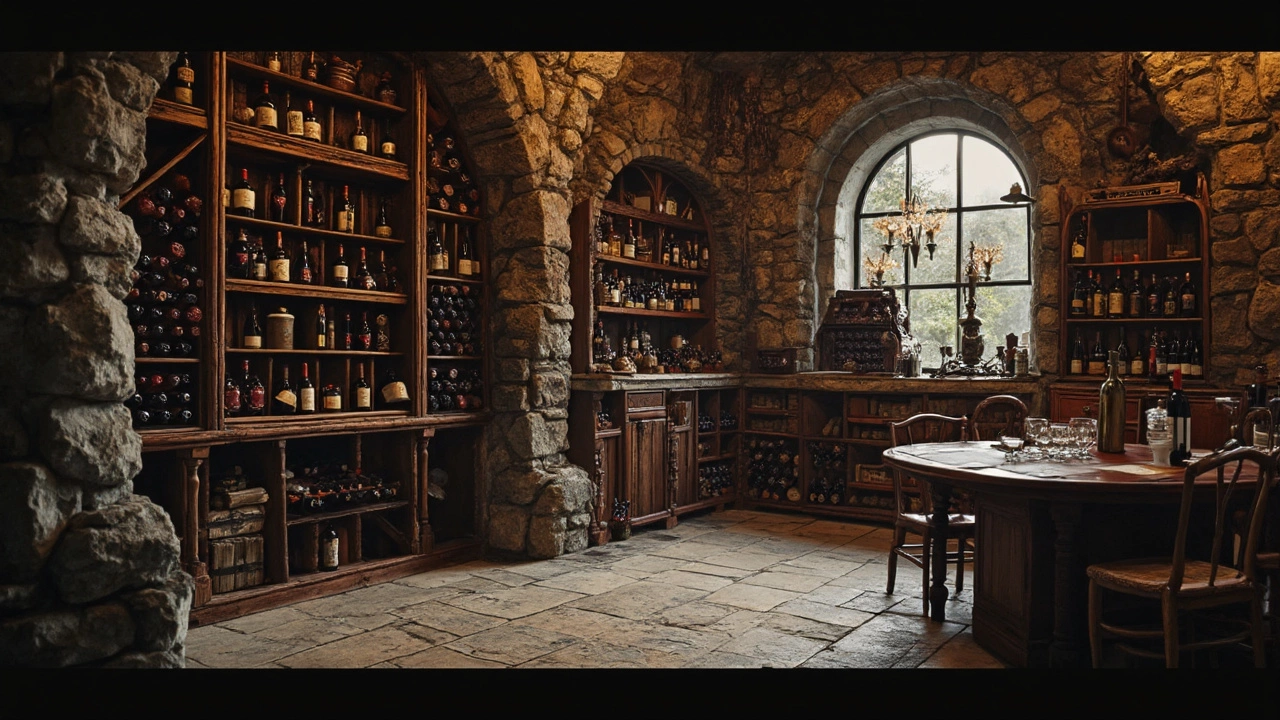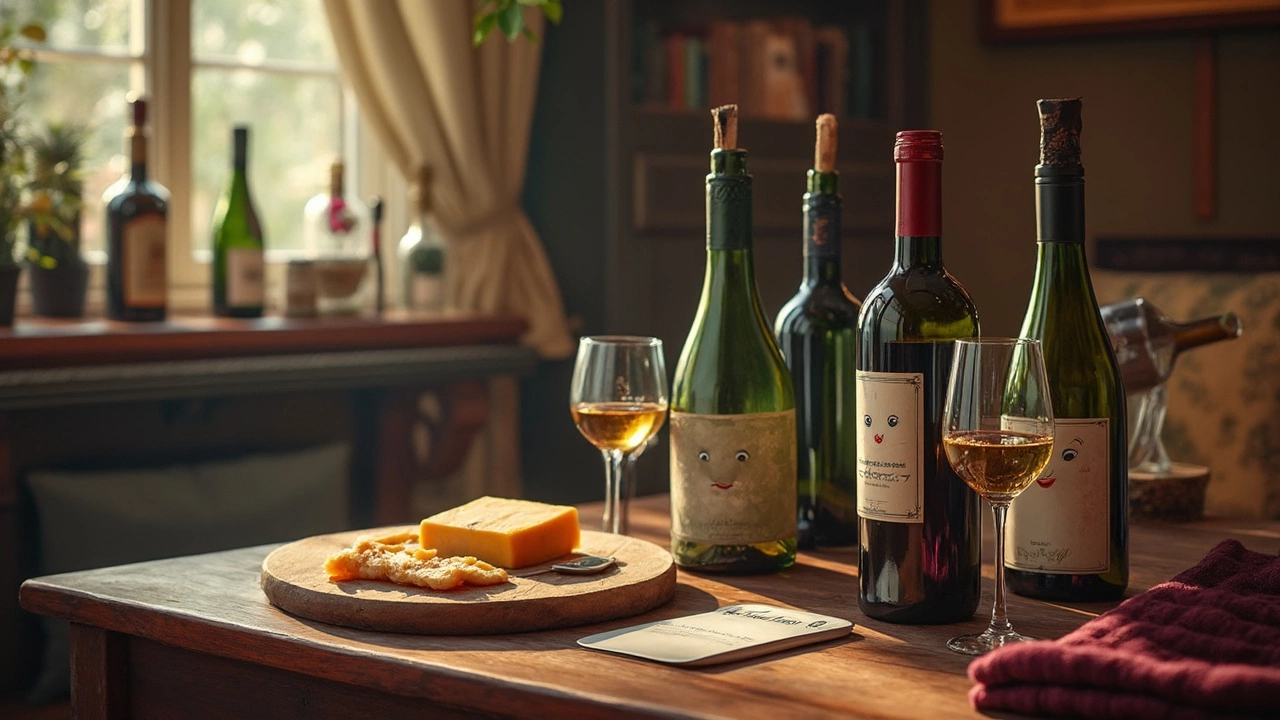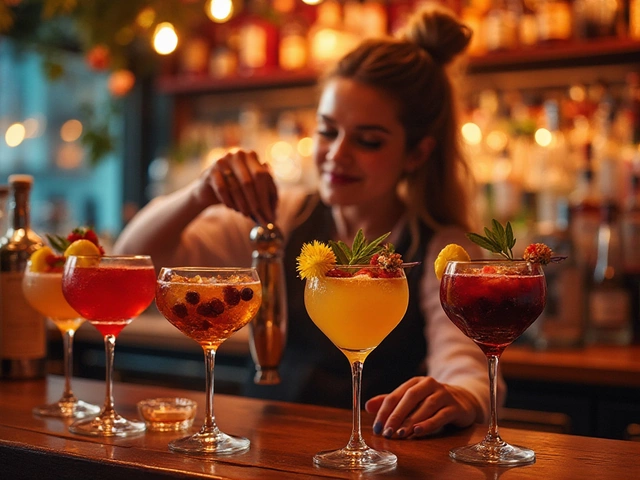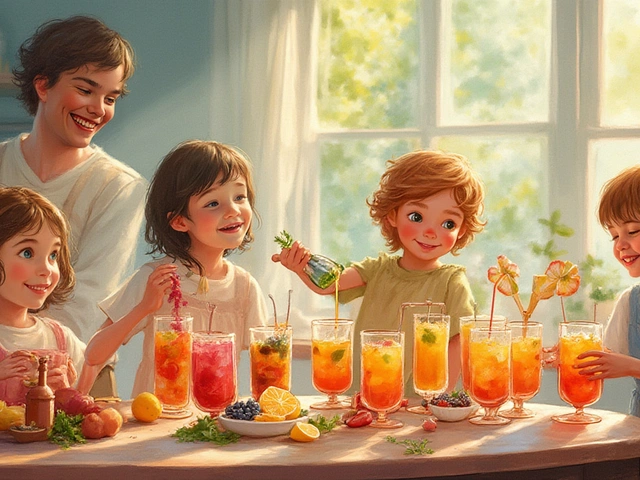Ever been out with friends, sipping on a glass of wine, and thought, 'Am I doing this right?' You're not alone, and there are a few things you should keep in mind to make sure you're getting the best out of every sip. Wine tasting isn't just about what's in the glass; it's about how you interact with it. Sure, it's tempting to swirl your drink like a pro or to plonk ice cubes in for a quick chill, but hold your horses.
First off, when you swirl, remember not to be too aggressive. You're trying to awaken the wine's aroma, not start a mini whirlpool! It’s like gently shaking hands rather than crushing someone's knuckles. And temperature? Oh boy, serve your white too cold or your red too warm, and you might miss out on the complex flavors that make wine such a joy.
- Swirling Mistakes
- Temperature Troubles
- Glassware Errors
- Overpowering Aromas
- Ignoring Vintage and Pairings
Swirling Mistakes
Swirling your wine might seem fancy, but it's actually a handy trick to enhance your wine tasting experience. When done right, it releases the wine's rich aromas, giving you a whiff of its character before it hits your taste buds. But, swirling too vigorously can lead to spillage, not to mention a good laugh at your expense.
So, how do you swirl like a pro? It’s simpler than you think. Grasp the base of the glass with your fingertips and draw gentle circles on the table with the glass base. This way, you control the motion and minimize the splash risk while still aerating the wine effectively. It's all about being gentle yet purposeful.
And here's a tip: stick to swirling your glass when it's filled up to a third. It's much easier to maintain balance and lets you catch all those aromatic notes without them flying out prematurely. Remember, you’re not just moving liquid around; you’re waking it up, letting the wine breathe.
Feel like diving a bit deeper into aroma science? Well, consider how different wines require different handling. For instance, younger reds benefit from a bit more aeration, while older wines might need a softer approach to preserve their delicate balance.
To gauge your swirling skills, pay attention to the 'legs' or 'tears' that form on the inside of the glass. These are created by the alcohol and glycerin content and can tell you a little something about the wine’s texture and alcohol content.
Temperature Troubles
Let's talk warmth and chill—when you're drinking wine, striking the right balance here is crucial. We've all been guilty of bungling wine temperature at some point. But get it wrong, and you could be muting flavors or turning a delightful sip into a dud.
Red wines often get served way too warm. Think about it, if you're leaving your reds on the kitchen counter in the middle of a warm summer, you're not doing them any favors. Ideally, red wine should be served somewhere between 12°C to 18°C. Serving it cooler than your usual room temperature can actually help bring out the delicate notes you might just miss if it’s too warm.
On the flip side, white wines often hit the table ice cold—straight from the fridge! Sure, a chilled glass on a hot day is tempting, but chilling it too much can numb the wine’s aroma and flavor. Most whites do best between 7°C and 13°C. That pinot grigio or chardonnay comes alive at these temps, offering you all its vibrant taste nuances.
- If you mistakenly serve your wine too cold, just let it sit out a bit. Your patience will be rewarded with more flavors!
- Warm wine? Try submerging it in a bucket of ice water for about 10 minutes, instead of tossing in ice cubes, which can dilute it.
Remember, the goal is to treat your wine like you’d treat a good friend—give it the best environment to shine.

Glassware Errors
Choosing the right glass for your wine might seem like a fussy detail, but it actually plays a huge role in how you experience flavors and aromas. Different shapes and sizes aren't just for show; they're designed to enhance specific aspects of your wine. Let's break it down so you don't accidentally mask those delightful notes with the wrong choice.
First, consider the shape of your glass. Red wine glasses are typically rounder and wider, providing more surface area. This allows the wine to breathe, releasing its aroma and complex flavors. In contrast, white wine glasses tend to be taller and more slender, which helps maintain a cooler temperature and concentrate the delicate aromas.
Next, there's the stem. You might be tempted to casually hold the bowl of the glass, especially if you're chatting or gesture-prone, but the stem exists for a reason. Holding the wine glass by the stem prevents your hand's warmth from heating up the wine, which could alter its intended serving temperature. Remember, those temperature mishaps could change your wine's taste profile significantly.
When it comes to something like sparkling wines, you’re best served by a flute. The narrow shape keeps bubbles from dissipating too quickly, maintaining the fizzy charm that makes sipping bubbly such a pleasure.
To help you choose the right glass, here's a quick guide:
- Red wine glass: Broad bowl for aeration, ideal for bold reds.
- White wine glass: Narrower bowl, maintains cooler temps, perfect for crisp whites.
- Sparkling wine flute: Slim design preserves bubbles, excellent for champagne and prosecco.
In a pinch, a universal wine glass can suffice. If you really need to choose just one type, go with a versatile glass with a moderate bowl—that way, you're at least covering most of your wine tasting bases.
Overpowering Aromas
When it comes to wine tasting, the setting can make or break the experience, especially if you're trying to appreciate the subtleties of your drink. One common mistake is sipping wine in an environment filled with strong, distracting smells. Imagine trying to taste fine wine while someone fries a batch of garlic bread next to you. Smells like these can easily overpower the aromas of the wine, which play a crucial role in the tasting process.
Our sense of smell is directly connected to how we perceive flavors. So, if you're surrounded by overpowering aromas, you're missing out on the layers of smell and taste that make each wine tasting unique. Next time you're planning to enjoy some wine, think about your surroundings. Try to pick a spot that's free from strong foods, perfumes, or any other scents that might mask the wine's natural fragrance.
Here's a neat fact: the olfactory center in our brains processes thousands of smell combinations with incredible detail. This means that even a faint aroma can impact how we experience wine. Maybe you've got an exotic candle burning nearby or the toaster's still busy with breakfast. These small things add up and can trick your brain into tasting things that aren't even there.
To truly enjoy your wine, make sure the environment is as neutral as possible. It's not just one of those annoyingly picky wine tips; it actually makes a difference. Choose a spot away from kitchens and strong perfumes, and let the wine do the talking. Trust me on this—less is more when it comes to scents around your wine.

Ignoring Vintage and Pairings
When it comes to enjoying wine, paying attention to vintage and food pairings can be a game-changer. Not all wines age like fine wine—no pun intended. Some wines, especially whites like Sauvignon Blanc, are best enjoyed young. Others, like a robust Cabernet Sauvignon, might need a few years to truly shine. Understanding these vintage differences can elevate your experience from 'meh' to 'wow.'
Now, let's talk about food pairings. Ever tried a glass of wine with the wrong dish? It can be like wearing socks with sandals—it just feels off. A big, bold red like a Shiraz can be amazing with grilled steak, but pair it with a delicate fish dish and the wine's flavors might just bulldoze the subtlety of the fish.
Here's a quick guide to get you started:
- Red Wines: Think beef, lamb, or hearty pasta dishes. Reds, especially fuller-bodied ones, accentuate the flavors of heavier meals.
- White Wines: Lighter proteins like chicken or seafood work well. Whites often complement the dish by adding a crisp freshness.
- Rosé Wines: Versatile and food-friendly, try with salads, light pasta, or even some spicy dishes.
- Sparkling Wines: Great for celebrations or with salty appetizers. The bubbles help cleanse the palate, ready for the next bite.
A remarkable example was in 2019, when a survey found that wine connoisseurs who paid attention to wine and food pairing reported increased satisfaction with their wine experience by over 60%. So, next time you're planning a dinner or just a casual snack, think about what’s in your glass. The right combination can make both the food and the wine taste better.


